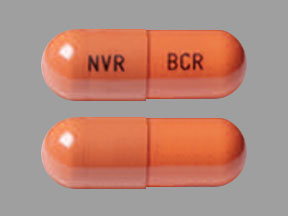Tasigna and Alcohol/Food Interactions
There is 1 alcohol/food/lifestyle interaction with Tasigna (nilotinib).
Nilotinib Food/Lifestyle
Major Food Interaction
GENERALLY AVOID: Grapefruit juice may increase the plasma concentrations of nilotinib. The proposed mechanism is inhibition of CYP450 3A4-mediated first-pass metabolism in the gut wall by certain compounds present in grapefruits. Because nilotinib is associated with concentration-dependent prolongation of the QT interval, increased levels may potentiate the risk of ventricular arrhythmias such as torsade de pointes and sudden death.
ADJUST DOSING INTERVAL: Food increases the oral bioavailability of nilotinib. The mechanism of interaction is unknown. Compared to the fast state, nilotinib systemic exposure (AUC) increased by 82% when the dose was given 30 minutes after a high-fat meal. Because nilotinib is associated with concentration-dependent prolongation of the QT interval, increased levels may potentiate the risk of ventricular arrhythmias such as torsade de pointes and sudden death.
MANAGEMENT: Patients treated with nilotinib should avoid consumption of grapefruit, grapefruit juice, and any supplement containing grapefruit extract. In addition, no food should be consumed for at least 2 hours before and 1 hour after a nilotinib dose.
References (1)
- (2007) "Product Information. Tasigna (nilotinib)." Novartis Pharmaceuticals
Switch to consumer interaction data
Tasigna drug interactions
There are 816 drug interactions with Tasigna (nilotinib).
Tasigna disease interactions
There are 8 disease interactions with Tasigna (nilotinib) which include:
- pancreatitis
- QT prolongation
- cardiovascular disease
- fluid retention
- bone marrow suppression
- electrolyte abnormalities
- hepatic impairment
- lactose intolerance
More about Tasigna (nilotinib)
- Tasigna consumer information
- Check interactions
- Compare alternatives
- Pricing & coupons
- Reviews (30)
- Drug images
- Side effects
- Dosage information
- During pregnancy
- Generic availability
- FDA approval history
- Drug class: BCR-ABL tyrosine kinase inhibitors
- Breastfeeding
- En español
Related treatment guides
Drug Interaction Classification
| Highly clinically significant. Avoid combinations; the risk of the interaction outweighs the benefit. | |
| Moderately clinically significant. Usually avoid combinations; use it only under special circumstances. | |
| Minimally clinically significant. Minimize risk; assess risk and consider an alternative drug, take steps to circumvent the interaction risk and/or institute a monitoring plan. | |
| No interaction information available. |
See also:
Further information
Always consult your healthcare provider to ensure the information displayed on this page applies to your personal circumstances.


